Testing Scroll
sdsd
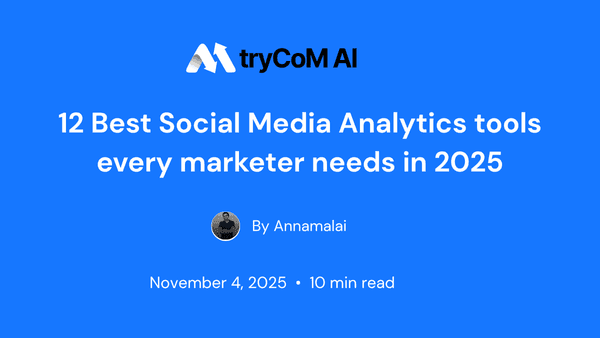
THE 12 BEST SOCIAL MEDIA ANALYTICS TOOLS FOR 2025
1. Sprout Social – Best All-in-One Platform for Enterprise Teams
- Key features: Unified inbox, customizable reports, AI-powered insights, and competitor benchmarking.
- Ideal for: Mid-to-large businesses and agencies managing multiple clients.
- Pros: Deep analytics, collaboration tools, sentiment analysis.
- Cons: Higher price tier for small teams.
However, tryCoM offers similar enterprise-level analytics and reporting flexibility at a more accessible cost.
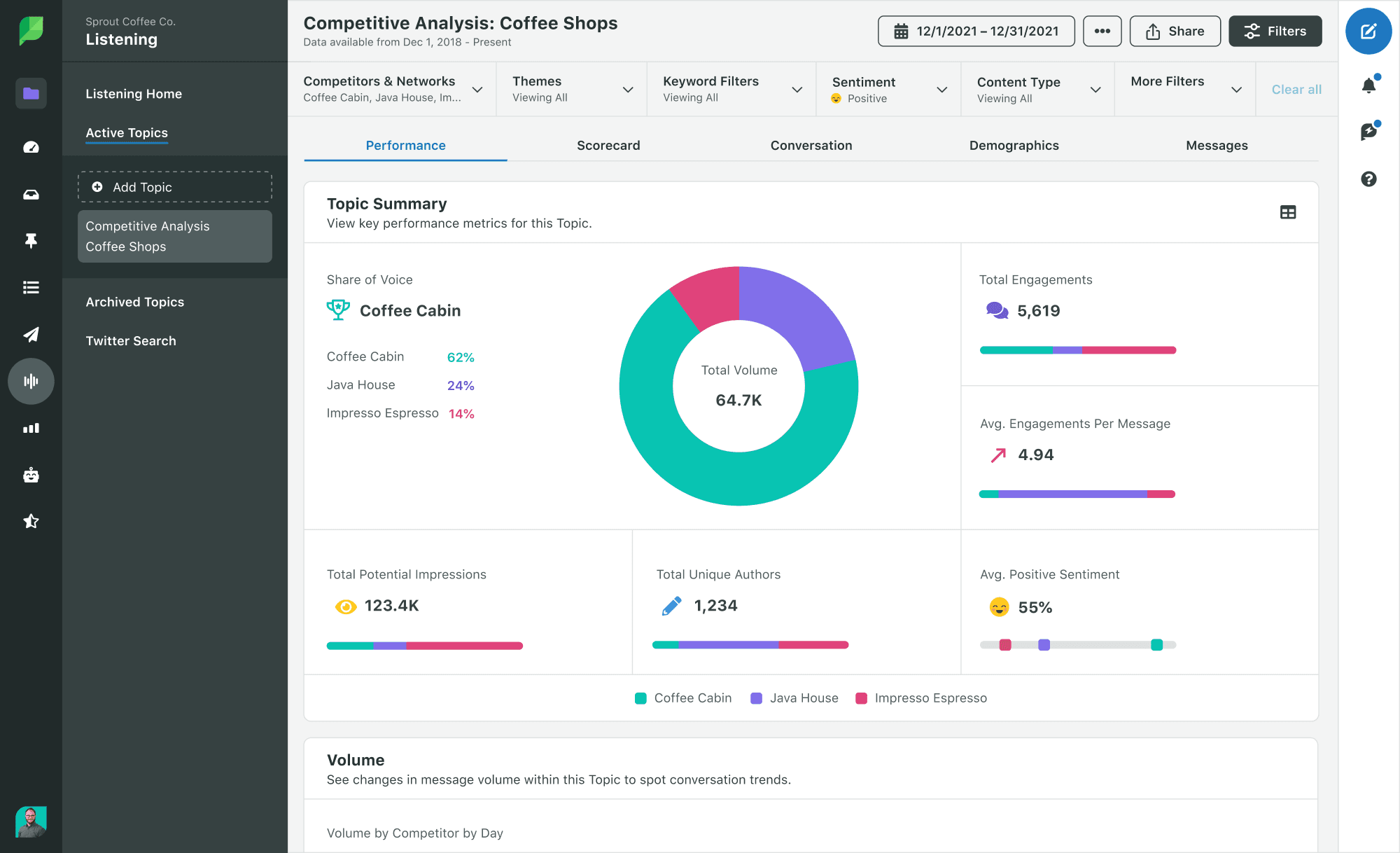
2. Buffer Analyze – Best for Creators and Small Teams
- Key features: Clean interface, post-level insights, story analytics, engagement rate tracking.
- Ideal for: Solopreneurs and startups.
- Pros: Affordable, easy to use, great for small operations.
- Cons: Limited multi-platform coverage.
tryCoM solves this by integrating both social and Google ecosystem analytics — giving marketers a unified dashboard that tracks performance from Facebook to Google Ads in one place.
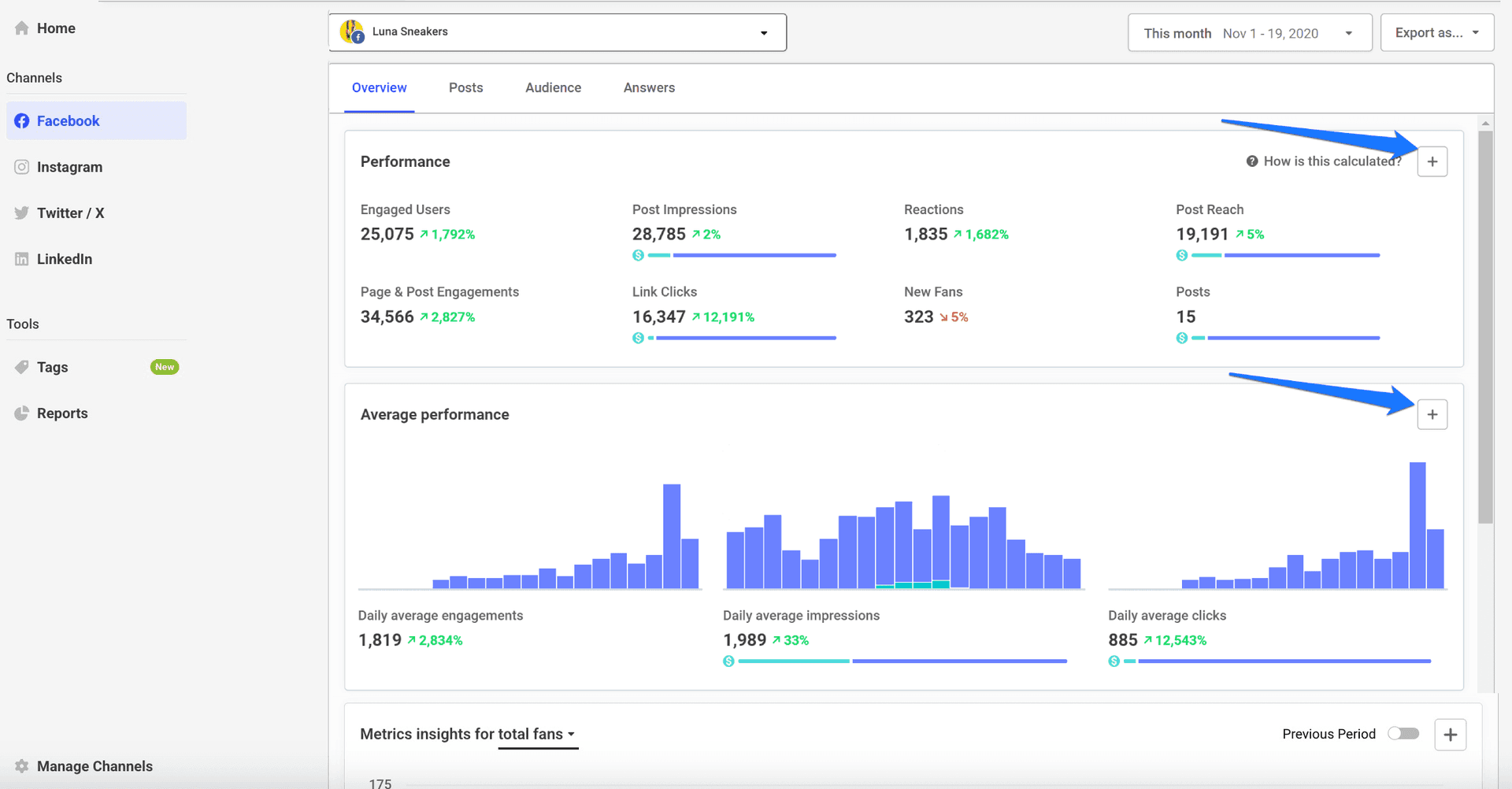
3. Hootsuite – Best for Enterprise-Grade Monitoring
- Key features: Team collaboration, advanced scheduling, cross-channel insights.
- Ideal for: Enterprises with large teams.
- Pros: Robust integrations, data export options.
- Cons: Complex interface for beginners.
tryCoM simplifies analytics with an intuitive, visual dashboard that combines deep insights with ease of use — perfect for marketers who want data clarity without complexity.
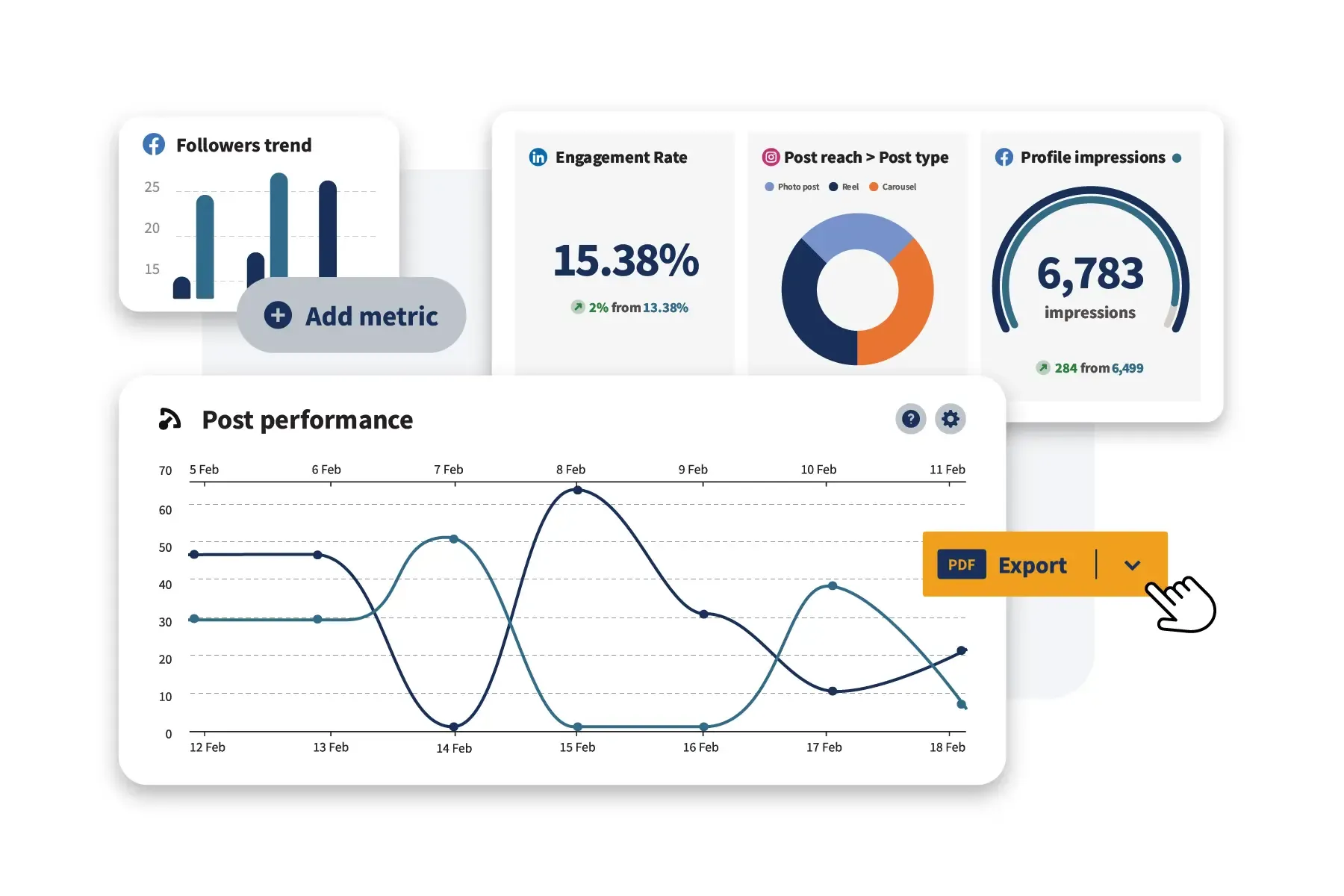
4. Rival IQ – Best for Competitive Analysis
- Key features: Compare up to 200 profiles, track engagement trends, and generate competitive reports.
- Ideal for: Agencies and brands needing constant competitive tracking.
- Pros: Detailed benchmarking and automated insights.
- Cons: Less emphasis on publishing.
tryCoM complements Rival IQ’s competitive insights by pairing analytics with full-funnel tracking — from social engagement to website conversions and Google Ads ROI.
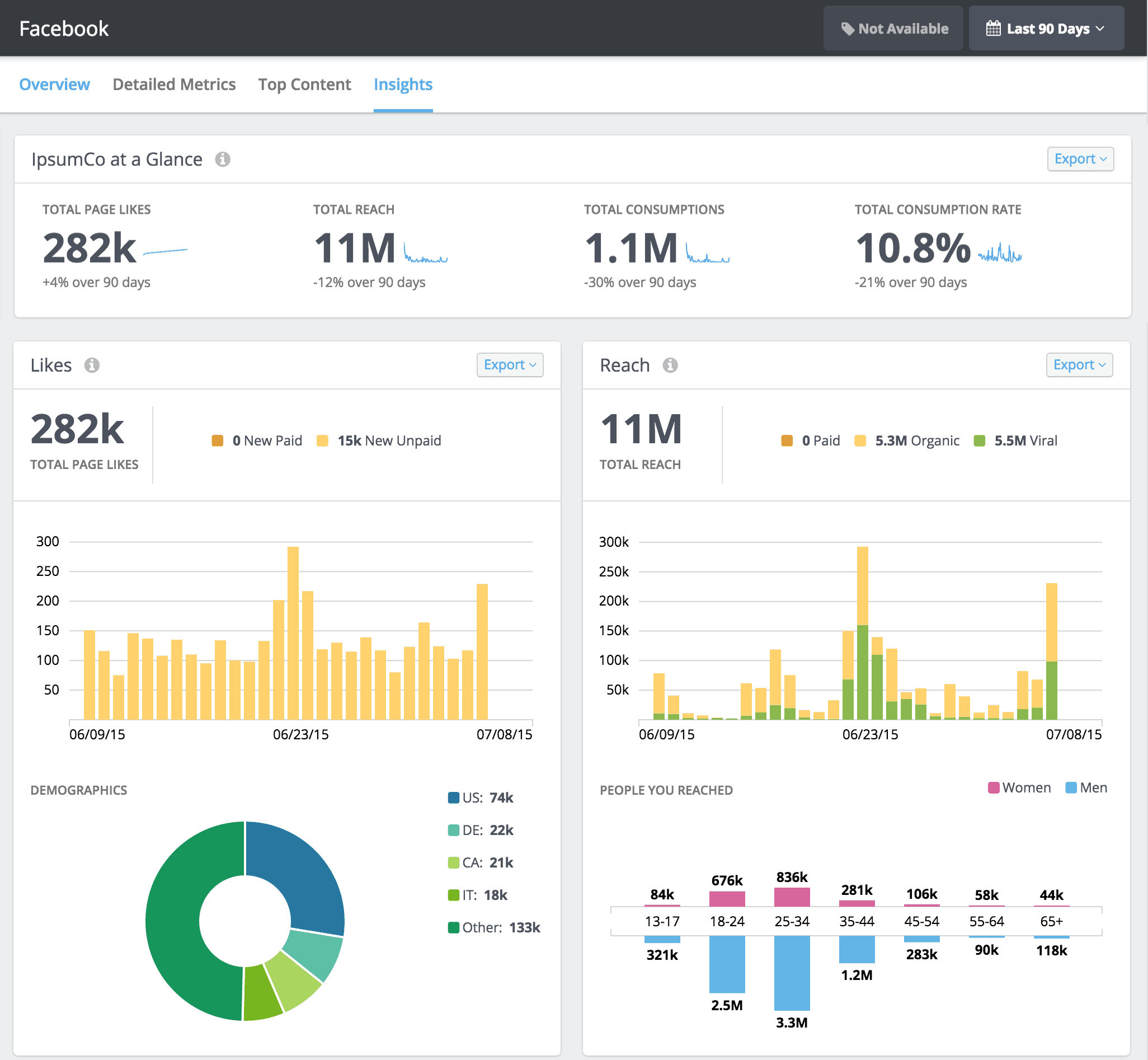
5. Keyhole – Best for Hashtag and Campaign Analytics
- Key features: Hashtag tracking, influencer analytics, sentiment insights.
- Ideal for: Event marketers and PR teams.
- Pros: Strong hashtag data.
- Cons: Focused primarily on campaign monitoring.
tryCoM goes beyond campaign tracking, connecting hashtag and engagement analytics to real business metrics like traffic, leads, and revenue.
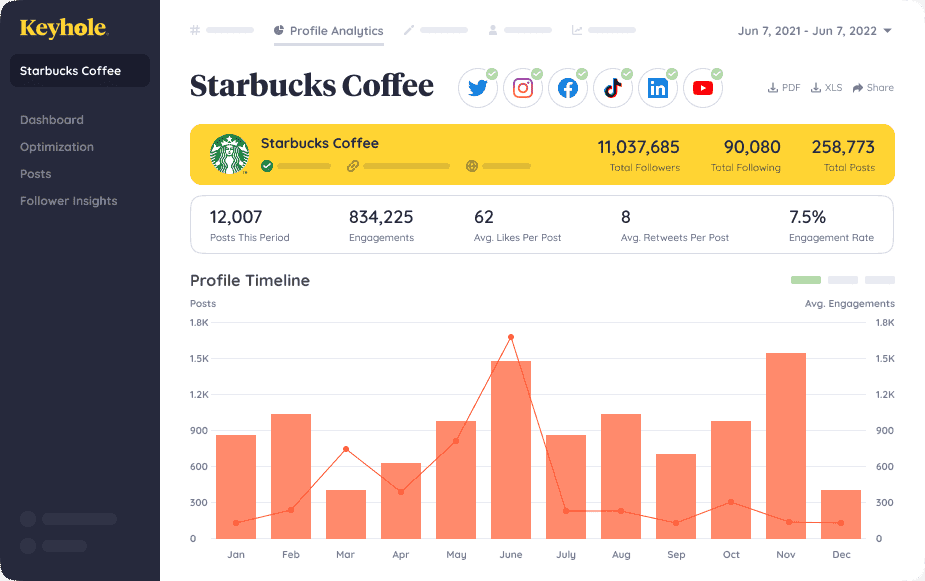
6. Brandwatch – Best for Social Listening and Sentiment
- Key feature: Advanced AI-powered social listening and sentiment analysis with predictive trend detection
- Ideal for: Enterprises managing brand reputation.
- Pros: Deep listening, demographic breakdowns, and predictive trend alerts.
- Cons: Steeper learning curve.
tryCoM provides a more accessible interface while still offering sentiment and performance insights across both social and Google channels — no steep learning required.

7. Socialinsider – Best for Multi-Platform Content Insights
- Key features: AI content scoring, post comparison, audience analysis.
- Ideal for: Agencies and data-driven marketers.
- Pros: Great competitor analysis; clean reports.
- Cons: Limited free tier.
tryCoM offers rich analytics and integrated reporting without complex pricing, giving small teams and agencies advanced data visibility at scale.
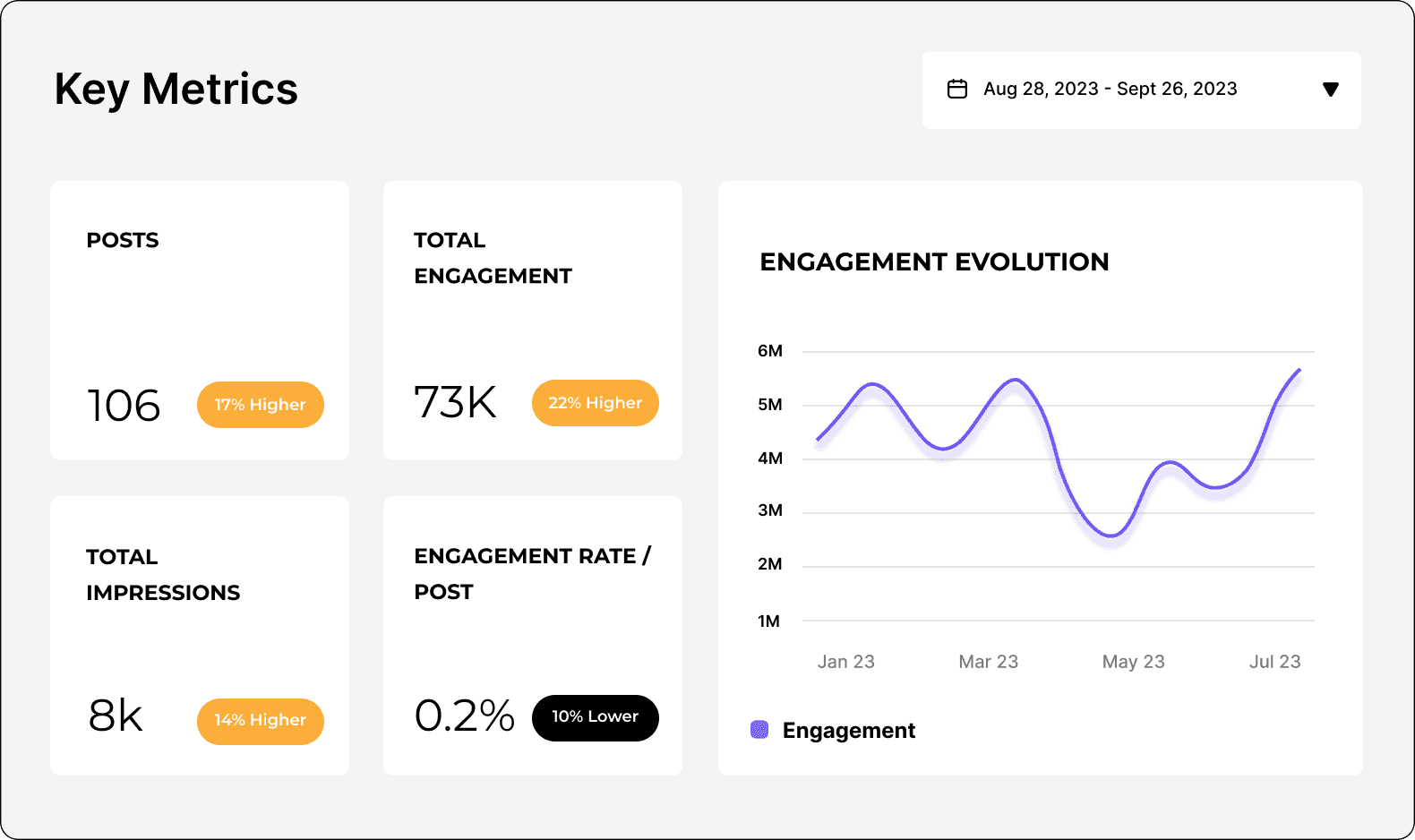
8. Iconosquare – Best for Instagram & Facebook Analytics
- Key features: Story tracking, engagement heatmaps, content optimization.
- Ideal for: Creators and e-commerce brands.
- Pros: Deep Instagram insights.
- Cons: Limited to fewer networks.
tryCoM eliminates this limitation by connecting Instagram and Facebook insights with Google Analytics, Ads, and LinkedIn data for a complete cross-channel view.
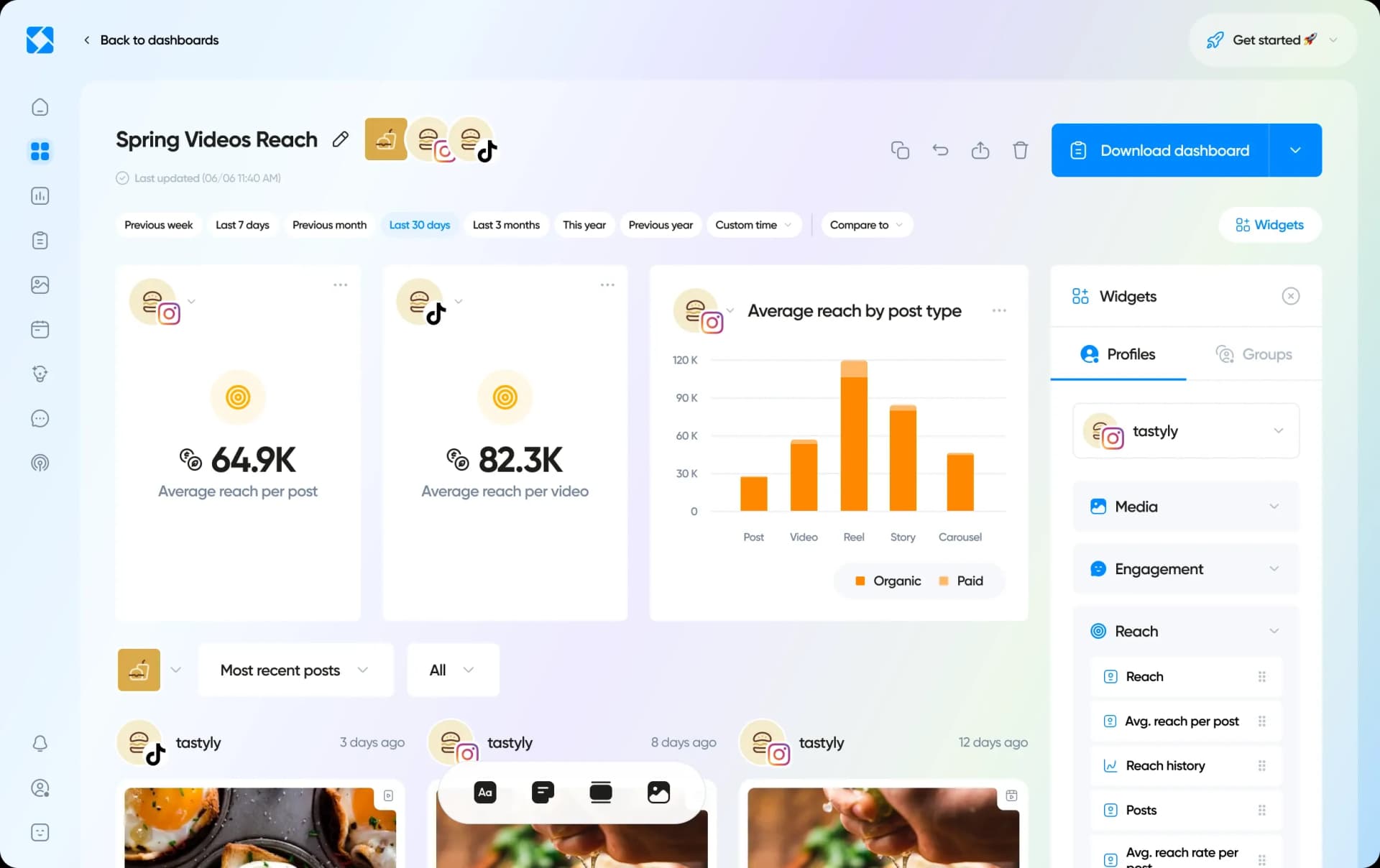
9. Brand24 – Best for Real-Time Social Listening and Mentions Tracking
- Key features: Sentiment analysis, mention tracking, keyword alerts, influencer identification.
- Ideal for: PR teams and reputation managers.
- Pros: Excellent real-time monitoring and sentiment insights.
- Cons: Limited historical data storage on lower plans.
tryCoM addresses this with long-term data archiving and trend visualization across social and Google metrics.
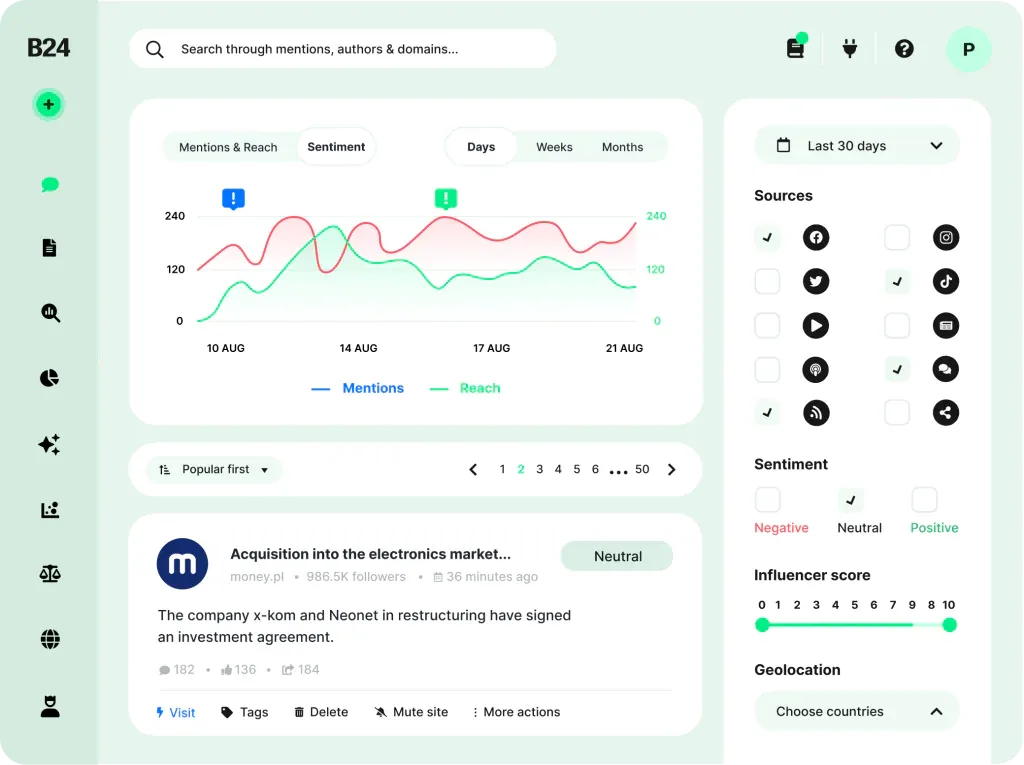
10. Zoho Social – Best for Agency Collaboration and Scheduling
- Key features: Content scheduling, engagement tracking, custom reports, team roles and approvals.
- Ideal for: Agencies and small-to-mid businesses.
- Pros: Smooth workflow collaboration and detailed scheduling tools.
- Cons: Analytics depth is basic compared to specialized tools.
tryCoM bridges that gap with advanced multi-channel reporting, predictive insights, and ROI tracking for both social and Google platforms.
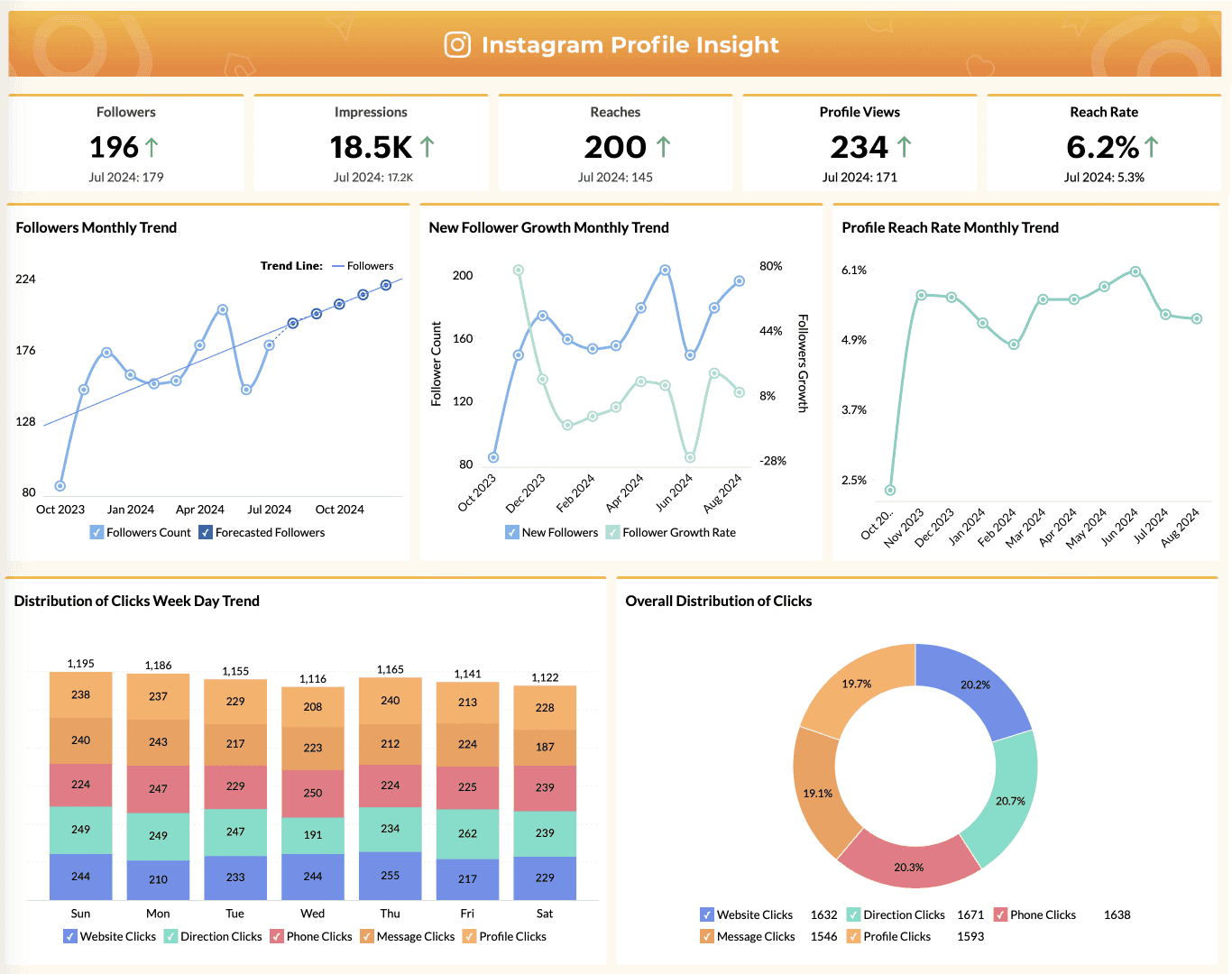
11. SocialBee – Best for Content Categorization and Evergreen Scheduling
- Key features: Category-based posting, evergreen content recycling, performance analytics, and post previews.
- Ideal for: Solo marketers and small teams seeking efficiency.
- Pros: Excellent for maintaining a balanced content mix.
- Cons: Limited competitor and advanced reporting insights.
tryCoM enhances these capabilities with detailed competitor benchmarking and cross-platform analytics that reveal content and campaign performance in depth.
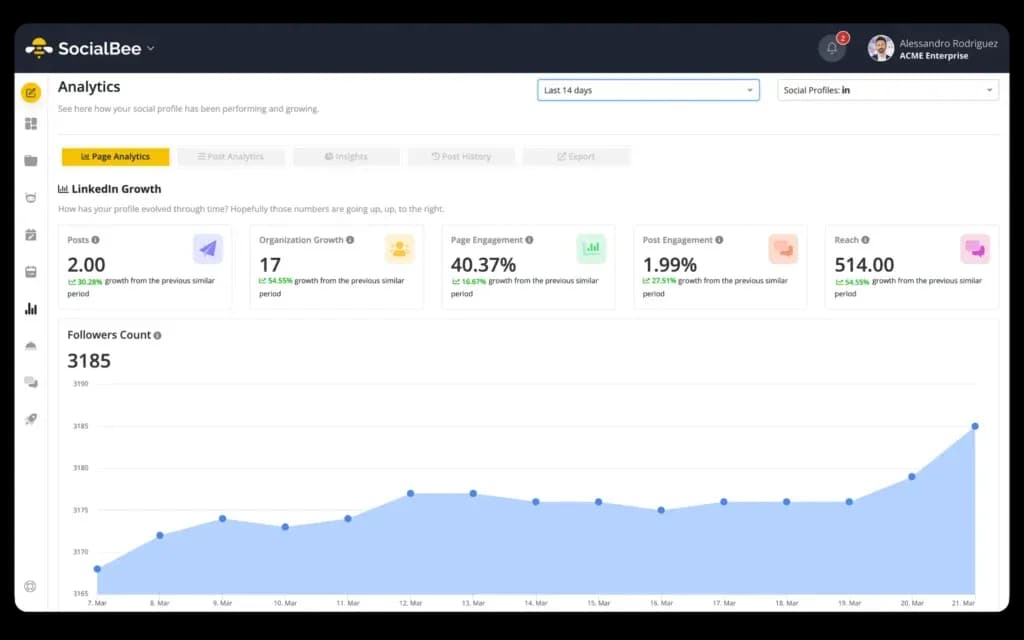
12. Mentionlytics – Best for AI-Powered Brand Reputation Monitoring
- Key features: Multi-language monitoring, sentiment tracking, competitor listening, and automated insights.
- Ideal for: Brands focused on online reputation and customer sentiment.
- Pros: Powerful AI assistant for interpreting mentions and trends.
- Cons: Reporting interface can feel dated compared to newer tools.
tryCoM delivers a modern, real-time reporting experience with clean visual dashboards and dynamic insights across all integrated platforms.

Every platform we’ve covered does an excellent job in its niche, but marketers often find themselves switching between tools to get a complete picture. tryCoM simplifies that by bringing all your social and Google analytics into one connected view.
tryCoM – Best for Agencies Wanting Unified Google + Social Analytics
tryCoM combines multi-platform social analytics with Google’s native ecosystem, letting marketers connect Facebook, Instagram, LinkedIn, YouTube, and Google Ads/Analytics in one project.
Key strengths:
- Unified reporting across social + Google channels
- Audience, engagement, and conversion metrics in a single dashboard
- Built-in competitor benchmarking for Facebook & Instagram
- Detailed geographic, device, and month-wise performance views
Ideal for: Agencies managing clients’ full digital footprint
Unique edge: Tracks conversions from social clicks all the way to sales — closing the loop between social performance and website ROI.
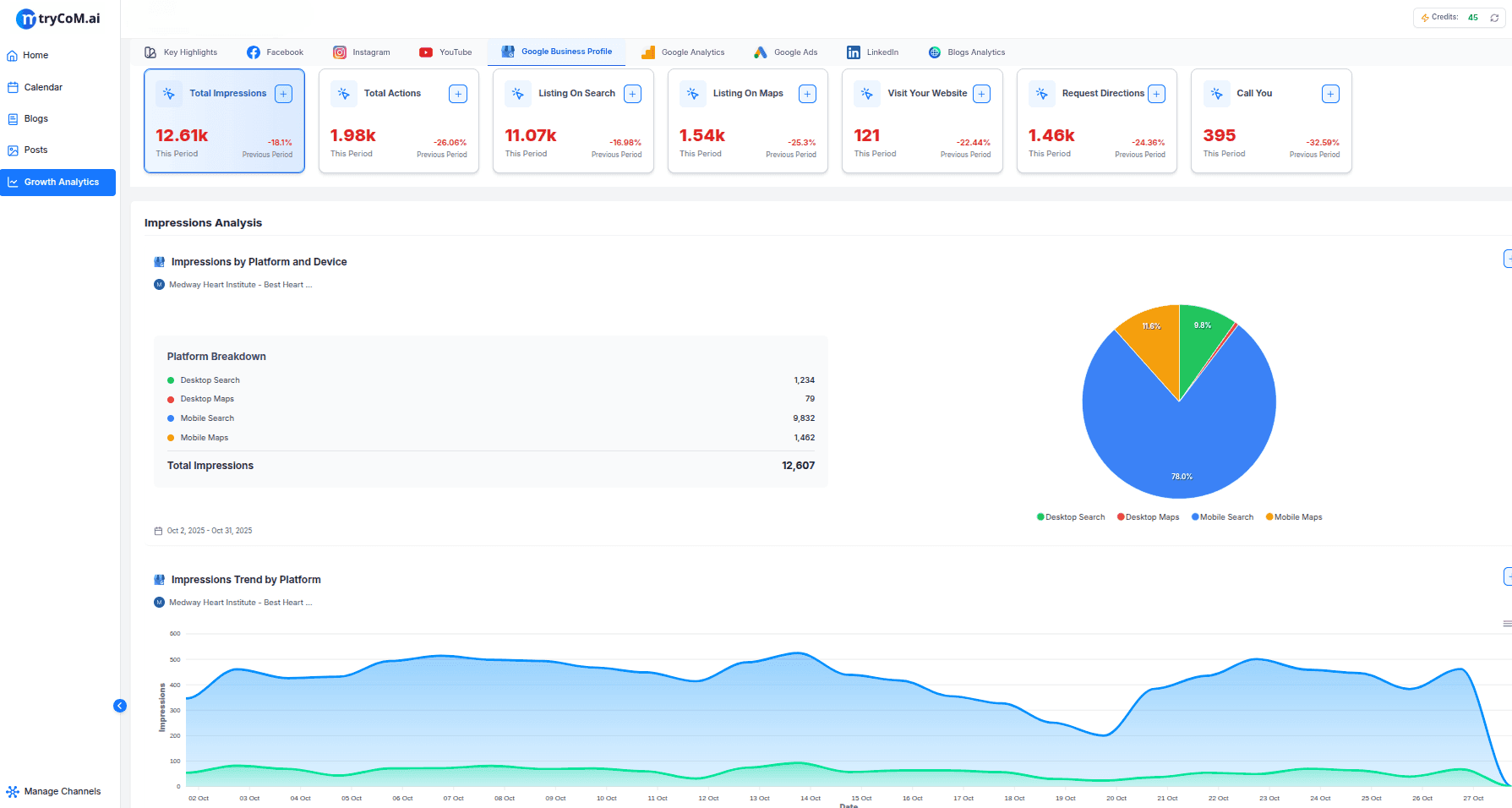
How to choose the right tool
- Assess Team Size and Use Case
- Consider Budget and Features
- Evaluate Integration Needs
- Test UI and Ease of Use
- Check Reporting Options
Advanced analytics features to look for in 2025
AI-Powered Recommendations
Modern analytics tools like Sprout Social and Brandwatch use AI to analyze engagement patterns and audience behavior. They automatically suggest the best posting times, trending topics, and content formats that are most likely to boost reach and interaction — helping marketers plan smarter and faster.
Predictive Analytics
Predict future campaign performance or audience growth trends based on historical data. tryCoM’s cross-platform trend graphs (datawise, devicewise, and monthwise) already act as predictive indicators by visualizing engagement and conversion shifts over time.
Sentiment Analysis
Sentiment analysis helps brands understand audience emotions behind comments, mentions, and reviews. By tracking positive, negative, or neutral sentiment in real time, marketers can detect reputation risks early, respond proactively, and maintain a strong brand image online.
Frequently Asked Questions (FAQ)
1. What are the four types of social media analytics?
The four types are descriptive, diagnostic, predictive, and prescriptive analytics. Together, they help marketers understand what happened, why it happened, what will happen next, and what actions to take.
2. Do I need a paid tool?
If you manage multiple accounts, need automated reporting, or want deeper insights beyond native platform metrics, a paid tool offers scalability, advanced analytics, and integration features.
3. What are the 7 layers of social media analytics?
The seven layers include data identification, extraction, cleaning, integration, analysis, insight generation, and optimization — each layer refines raw data into actionable intelligence.
4. What are the 7 C’s of social media?
They are content, context, community, conversation, customization, consistency, and conversion — the core principles of building and maintaining meaningful engagement online.
5. What metrics should I track?
Focus on engagement rate, reach, CTR, conversions, ROI, and audience demographics to measure both performance and audience resonance effectively.
6. How do tools measure ROI?
Social analytics tools measure ROI by linking website traffic, conversions, and revenue directly with social media campaigns, helping you track what drives measurable growth.
7. What’s the difference between analytics and social listening?
Analytics measures how your own content performs, while social listening monitors brand mentions, keywords, and sentiment across the web to understand public perception.